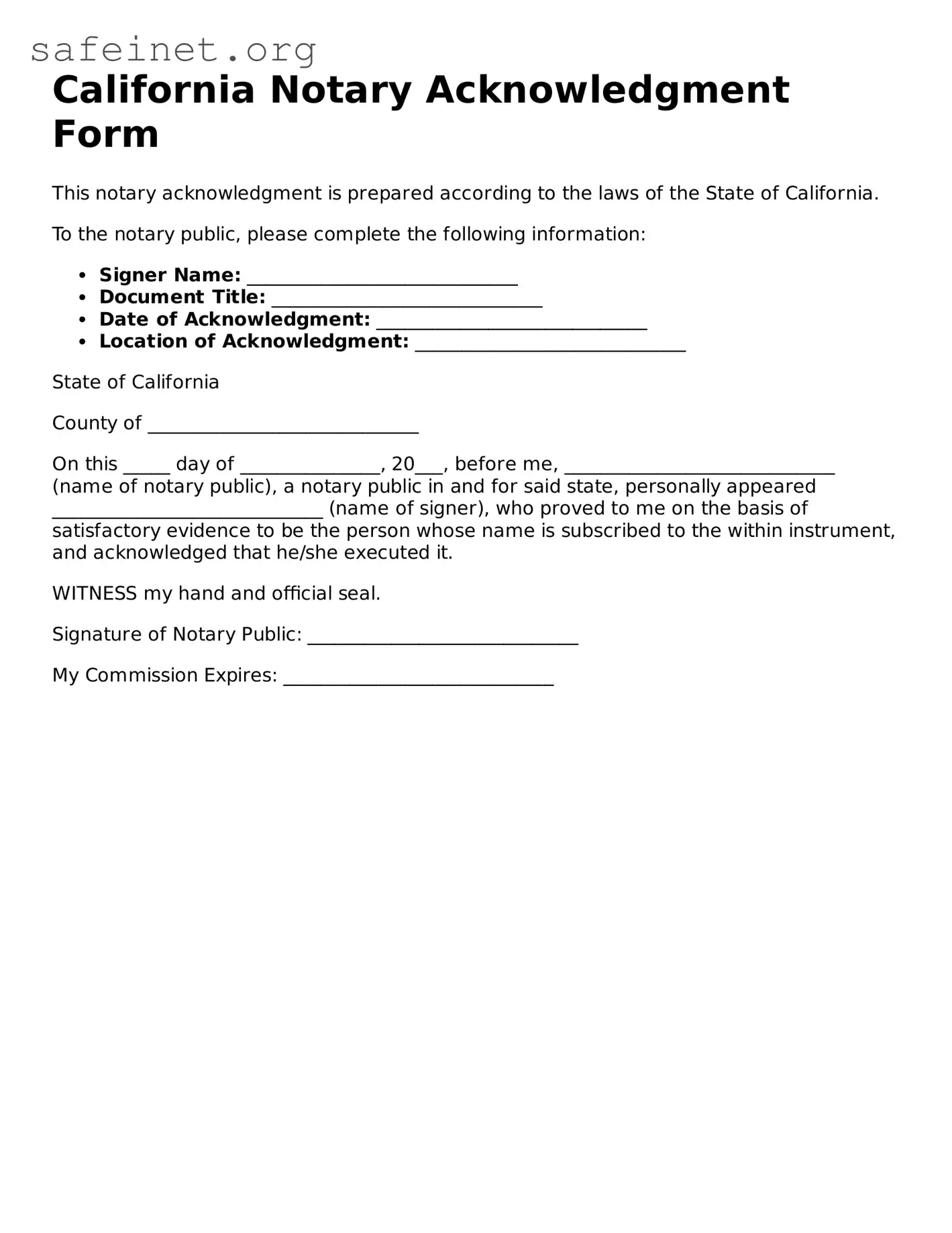California Notary Acknowledgment Form
This notary acknowledgment is prepared according to the laws of the State of California.
To the notary public, please complete the following information:
- Signer Name: _____________________________
- Document Title: _____________________________
- Date of Acknowledgment: _____________________________
- Location of Acknowledgment: _____________________________
State of California
County of _____________________________
On this _____ day of _______________, 20___, before me, _____________________________ (name of notary public), a notary public in and for said state, personally appeared _____________________________ (name of signer), who proved to me on the basis of satisfactory evidence to be the person whose name is subscribed to the within instrument, and acknowledged that he/she executed it.
WITNESS my hand and official seal.
Signature of Notary Public: _____________________________
My Commission Expires: _____________________________
